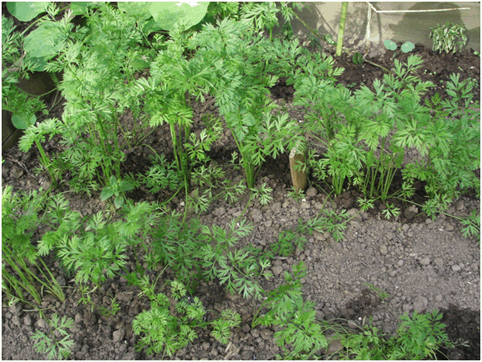
Soil is an important growing medium and comes in many shapes and forms. The best soil for growing is loam, which is a mixture of several different types, but wether you have loam, sand, silt or clay, with some work you can turn it into an excellent growing medium.
Sand
Although sand has very good drainage, the particles are so large and course that you can see them without a microscope and therefore it also allows lots of nutrients to get washed away.
Add well rotted manure, compost and leafmould as the humus will bind the particles aiding water and therefore nutrient retension.
Clay
Pure clay is a nightmare. It is impossibble to dig when wet and sets like a rock when dry. If properly managed, clay retains water and nutrients but allows for sufficient drainage.To do this dig when moist and add manure, leafmould, compost and sand.
Silt
Similar to clay, with small particles, silt is not improved by the addition of lime and nor does it shatter when exposed to frost.
Loam
being a mixture of several types of soil, loam can range from one extreme to the other, but the ideal loam is 40% sand 40% silt and 20% clay.
Mulching
In general, mulching is adding organic matter to the top layer.
In winter soil should not be left open to the weather unless it is unimproved clay that needs the frost to shatter it. I find that well rotted manure with black plastic on top makes the best winter mulch and I leave the manure for the worms to work into the soil.
Mulching is done in spring to hold in warmth, in summer to hold moisture, in autumn to stop erosion and in winter to stop erosion and keep it warm. All organic mulches feed the soil no matter what time of year it is.
Regulating acidity
Of course all plants have different preferences but pH 6.5 (slight acidity) is the best as this is generally where the most nutrients are available. PH7 is neutral and above or below is alkaline or acidic.
Dolomite and ground limestone are useful for regulating acidity. Calcified seaweed adds the seaweed benefits (major and trace elements alike) while also regulating acidity.
Gypsum is a neutral addition which binds clay with calcium.
Regulating alkalinity
This can be done with manure which is slightly acidic and comphrey which also adds nutrients especially potassium.
Many books are dedicated to soil and go into details that I cannot explain here.
Happy gardening!!!!
Countryside Blog
Gardeners, Soil for new Gardeners




Recent Comments